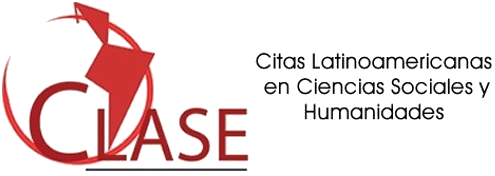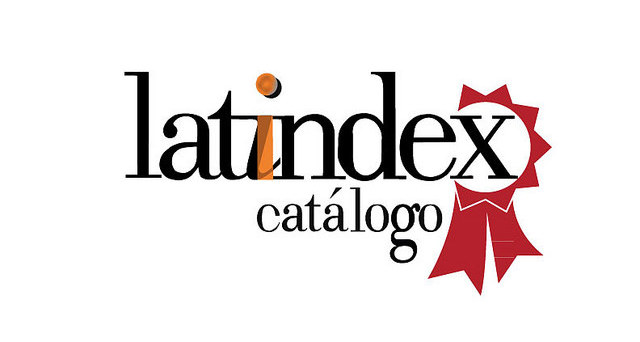Obtuse is the meaning: visuality and ethnographic practice.
DOI:
https://doi.org/10.29340/en.v5n9.274Keywords:
obtuse, address, ethnographyAbstract
What about the image that marks absence, when more than revealing it increases uncertainty? There, teetering on the currents of a river, a lump appears. Over here, closer, in a washed-out portrait, a wink is detonated. There are always opaque regions where bodies are formed. Between the dumbness and the change, waves escape. When the back is turned to the camera in a moment frozen by astonishment. Shadows that brush, that interplay with the sun's rays and the piercing noises of drills. There where there are material traces of a care suspended by disappearance. Every ethnographic encounter leaves records. Sometimes, from them emerge images that point to something singular, of fleeting temporality.
Downloads
References
Attridge, Derrick (1997). “Roland Barthes's Obtuse, Sharp Meaning, and the Responsibilities of Commentary”, en Derek Attridge, Writing the Image after Roland Barthes. Philadelphia: University of Pennsylvania Press, pp. 77-89. https://doi.org/10.9783/9780812200232.77 DOI: https://doi.org/10.9783/9780812200232.77
Barthes, Roland (1980). Mitologías (Héctor Schmucler, trad.). Ciudad de México: Siglo xxi.
_____________ (1989). La Cámara Lúcida (Joaquim Sala-Sanahuja, trad.). Buenos Aires: Paidós.
_____________ (1986). Lo Obvio y Lo Obtuso: Imágenes, Gestos, Voces (C. Fernández Medrano, trad.). Barcelona: Paidós Ibérica.
_____________ (1994). El susurro del lenguaje : más allá de la palabra y de la escritura (C. Fernández Medrano, trad.). Buenos Aires: Paidós.
Benjamin, Walter (2015). Desembalo mi Biblioteca. Palma de Mallorca: José J. de Olañeta.
Bergson, Henri (1919). L’energie spirituelle. Paris: F. Alcan.
____________ (1900). Materia y memoria: ensayo sobre la relación de cuerpo con el espíritu (M. Navarro, trad.). Madrid: V. Suárez.
Crary, Jonathan (2007). Las técnicas del observador. Visión y modernidad en el siglo xix. Murcia: Cendeac.
Derrida, Jacques (1997). Mal de Archivo. Una impresión freudiana. Madrid: Editorial Trotta.
Fabian, Johannes (1990). “Presence and representation: The other and anthropological writing”. Critical Inquiry, vol. 16, núm. 4, pp.753-772. DOI: https://doi.org/10.1086/448558
Frege, Gottlob (1996). “Sobre Sentido y Referencia.” Estudios Sobre Semántica, 85–97.
Freud, Sigmund (1919). “The Uncanny”, en Albert Dickson y James Strachey (eds.), Art and literature: Jensen’s Gradiva, Leonardo da Vinci and other works (James Strachey, trad.). London: Penguin, pp. 335-376.
Haverkamp, Anselm (1993). “The memory of pictures: Roland Barthes and Augustine on photography”. Comparative Literature, vol. 45, núm. 3, pp. 258-279. https://doi.org/10.2307/1771504 DOI: https://doi.org/10.2307/1771504
Geertz, Clifford (2008). “Common sense as a cultural system”, en Clifford Geertz, Local knowledge: Further essays in interpretive anthropology. Nueva York: Basic books, pp. 73-93.
Gramsci, Antonio (1971). Selections from the Prison Notebooks. Nueva York: International Publishers.
Lévi-Strauss, Claude (1994). Saudades do Brasil. Paris: Plon.
MacDougall, David (2005). The Corporeal Image. Film, Ethnography, and the Senses. Pinceton : Princeton University Press. https://doi.org/10.1515/9781400831562 DOI: https://doi.org/10.1515/9781400831562
Marks, Laura (2000). The Skin of the Film: Intercultural Cinema, Embodiment, and the Senses. Durham: Duke University Press. https://doi.org/10.2307/j.ctv1198x4c DOI: https://doi.org/10.1215/9780822381372
Mead, Margaret y Gregory Bateson (1977). “On the Use of the Camera in Anthropology”. Studies in the Anthropology of Visual Communication, vol. 4, num. 2, pp. 78-80. https://doi.org/10.1525/var.1977.4.2.78 DOI: https://doi.org/10.1525/var.1977.4.2.78
Morris, Rosalind C. (2009). “Introduction”, en Rosalind C. Morris (ed.), Photographies East: The Camera and Its Histories in East and Southeast Asia. Durham: Duke University Press, pp. 1-28. https://doi.org/10.1215/9780822391821-001 DOI: https://doi.org/10.2307/j.ctv1198v4d.3
Nietzsche, Frederich (1988). Sobre verdad y mentira en sentido extramoral. Miscelánea de opiniones y sentencias (Edmundo Fernández González y Enrique López Castellón, trads.). Barcelona: Grupo Editorial Marte. Publicado originalmente en 1873.
Ottenberg, Simon (1990). “Thirty years of fieldnotes: Changing relationships to the text”, en Roger Sanjek (ed.), Fieldnotes: The makings of anthropology. Ithaca: Cornell University Press, pp. 139-160. https://doi.org/10.7591/9781501711954-007 DOI: https://doi.org/10.7591/9781501711954-007
Oxman, Elena (2010). “Sensing the Image: Roland Barthes and the Affect of the Visual”. SubStance, vol. 39, núm. 2, pp. 71–90. https://doi.org/10.1353/sub.0.0083 DOI: https://doi.org/10.1353/sub.0.0083
Pink, Sarah (2015). “Approaching Media through the Senses: Between Experience and Representation”. Media International Australia, vol. 154, núm. 1, pp. 5-14. https://doi.org/10.1177/1329878X1515400103 DOI: https://doi.org/10.1177/1329878X1515400103
Pinney, Christopher (2003). “Notes from the surface of the image. Photography, postcolonialism and vernacular modernism”, en Christopher Pinney y Nicholas Peterson (eds.), Photography’s other histories. Durham y Londres: Duke University Press, pp. 202-219. https://doi.org/10.1215/9780822384717-011 DOI: https://doi.org/10.1215/9780822384717-011
Poole, Deborah (2005). “An Excess of Description: Ethnography, Race, and Visual Technologies”. Annual Review of Anthropology, vol. 34, pp. 159-79. https://doi.org/10.1146/annurev.anthro.33.070203.144034 DOI: https://doi.org/10.1146/annurev.anthro.33.070203.144034
Romero, Andrés (2015, 14 de agosto). “Image as Method: Conversations on Anthropology through the Image”. Somatosphere [sitio web]. Recuperado de http://somatosphere.net/2015/image-as-method-conversations-on-anthropology-through-the-image.html/, consultado el 9 de febrero de 2022.
Shawcross, Nancy (1997). Barthes on Photography: The Critical Tradition in Perspective. Gainesville: University of Florida Press.
Stevenson, Lisa (2018, 6 de marzo). “Images”. Society for Cultural Anthropology [sitio web]. Recuperado de https://culanth.org/fieldsights/images, consultado el 9 de febrero de 2022.
Stewart, Kathleen (2016). “The Point of Precision”. Representations, vol. 135, núm. 1, pp. 31–44. https://doi.org/10.1525/rep.2016.135.1.31 DOI: https://doi.org/10.1525/rep.2016.135.1.31
______________ (2003). “Arresting images”, en Pamela R. Matthews y David McWhirter (eds.), Aesthetic Subjects. Minneapolis: University of Minnesota Press, pp. 431-448
Taussig, Michael (1993). Mimesis and Alterity: A Particular History of the Senses. Londres: Routledge.
______________ (2011). I swear I saw this: Drawings in fieldwork notebooks, namely my own. Chicago: University of Chicago Press.
Williams, Raymond (1977). Marxism and Literature. Londres y Nueva York: Oxford University Press.
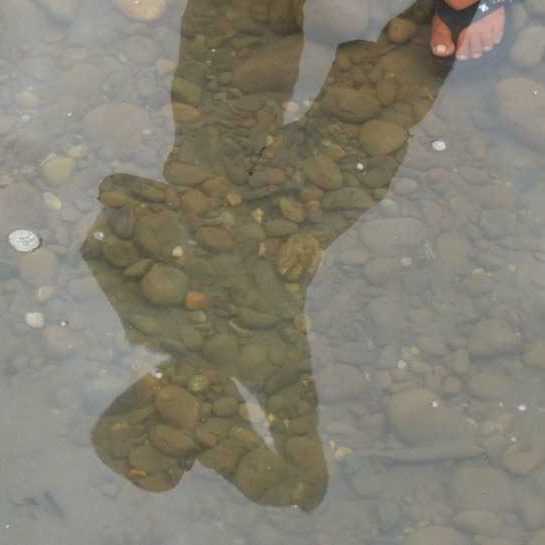
Published
Issue
Section
License
Copyright (c) 2022 Encartes

This work is licensed under a Creative Commons Attribution-NonCommercial 4.0 International License.
Aviso de derechos de autor
- Los autores/as conservan los derechos de autor y ceden a la revista el derecho a la primera publicación con el trabajo registrado con la licencia de atribución Creative Commons, que permite a terceros utilizar lo publicado siempre que mencionen la autoría del trabajo y a la primera publicación en esta revista
- Los autores/as pueden realizar otros acuerdos contractuales independientes y adicionales para la distribución no exclusiva de la versión del artículo publicado en esta revista (por ej. Incluirlo en un repositorio institucional o publicarlo en un libro) siempre que indiquen claramente que el trabajo se publicó por primera vez en esta revista.
El material puede ser copiado, distribuido, comunicado, ejecutado públicamente. Se pueden hacer obras derivadas de él. No se puede utilizar para fines comerciales. Se debe reconocer y citar la obra de la forma en que tú especifiques.

